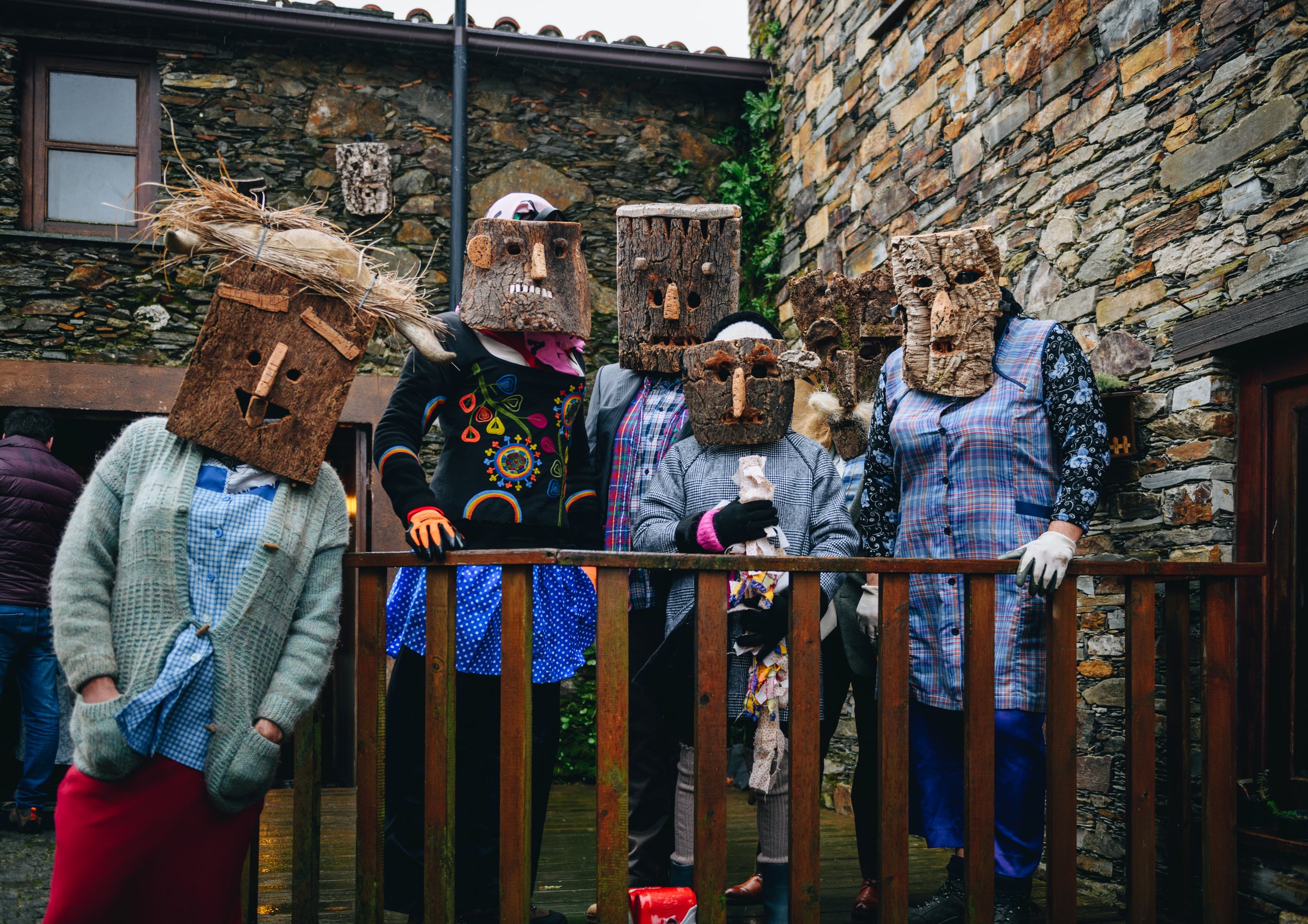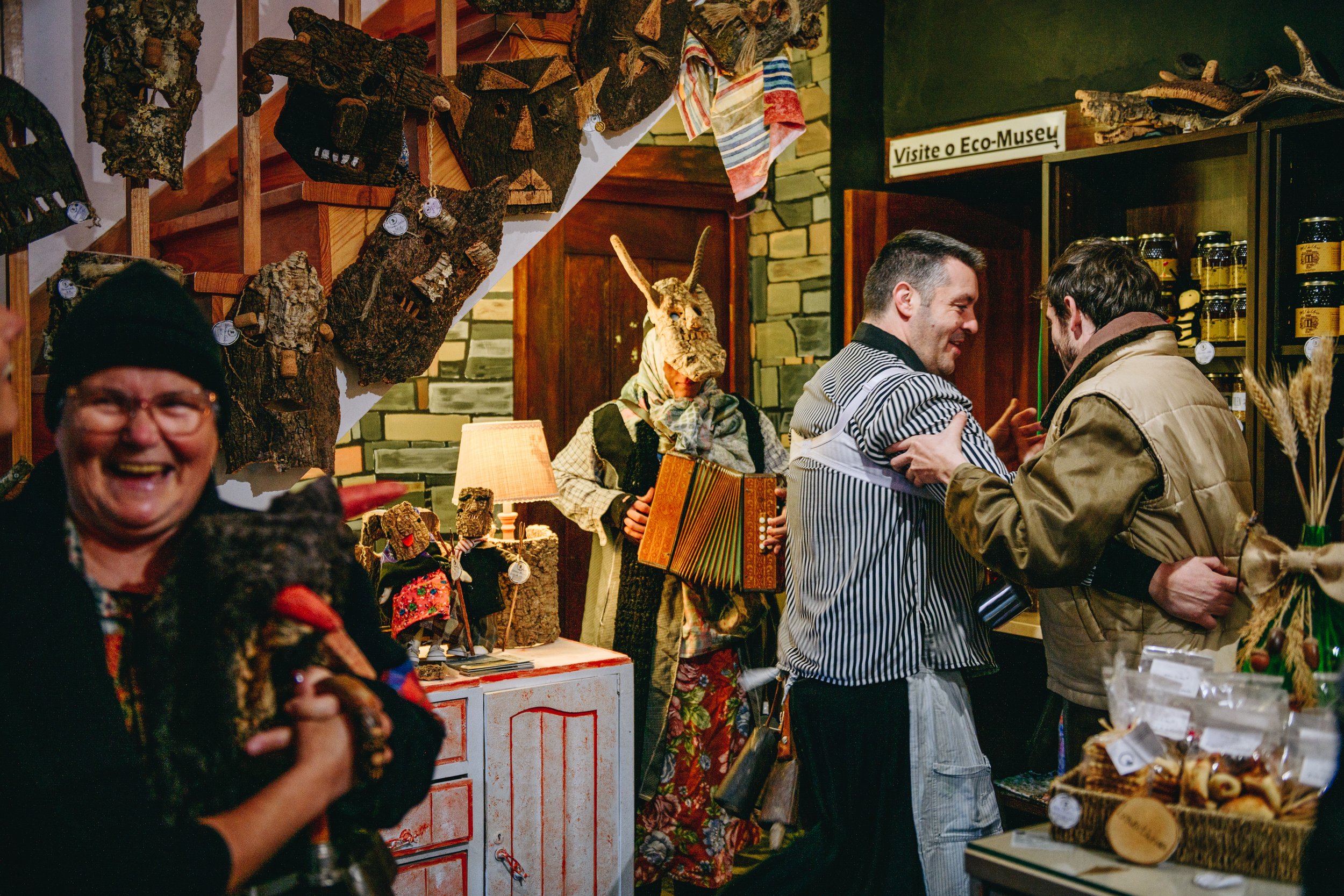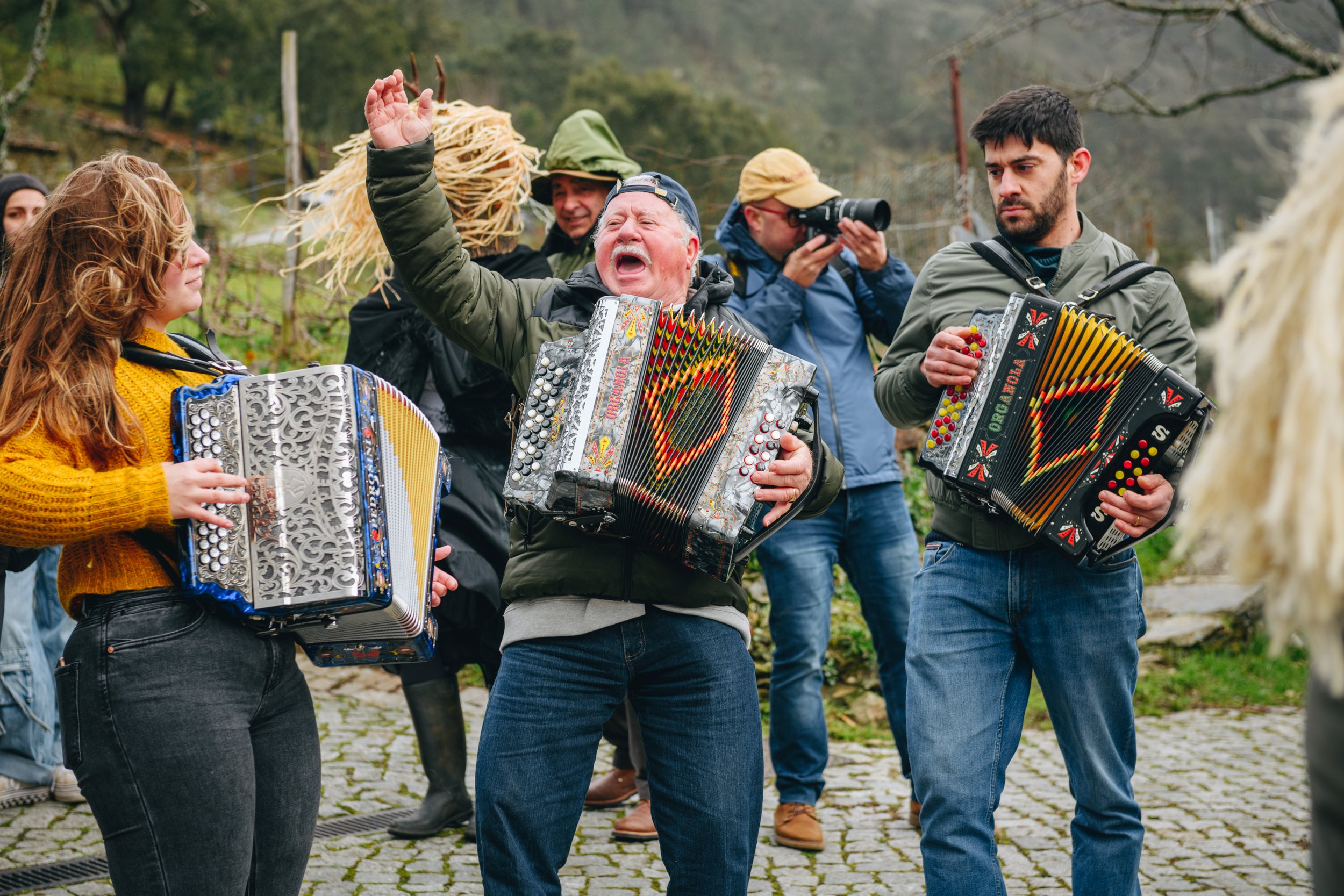O Entrudo Tradicional das Aldeias do Xisto de Góis is only one of many unique cultural experiences almost lost in the name of progress.
Portugal, like most old world countries, is rife with cultural traditions spanning and shifting through many, many centuries. While some traditions have arguably had their time and it’s best to leave them on the pages of history books, others speak to on-going identity in the face of change. Some are embraced, others scorned, and others almost forgotten outside small communities and isolated elders.
Entrudo, or “Shrovetide” in English, is an annual carnival festival marked by the beginning of Lent in the Catholic calendar. While such timing implies a religious Christian tradition, this is more akin to various midwinter or pre-springtime pagan festivals that pre-date Christianity. All across Europe there are examples of such celebrations at the beginning of Lent. Traditionally Lent was created as an attempt to turn scarcity into virtue, as usually around mid-February, winter stores were running out and a period of difficulty (scarcity and fasting) often began out of necessity rather than choice — prior to the adoption of the supermarket. Christians adapted this into Lent, usually 40 days leading up to a feast on Easter when food was becoming plentiful again and spring was beginning. Other theories for such celebrations revolve around old gods of winter, and causing mischief to chase them away so spring can arrive. Anthropologists and historians have a multitude of explanations for why so many cultures celebrate during the dreary days of February. Entrudo translates to “entering” and you’ll see it at the beginning of parades. In this case, it is the entering of spring. Days get longer and weather warms up. It is clearly a pagan tradition from ancient populations on the Iberian peninsula, and further abroad.
Whatever the initial reason, the tradition of entrudo has been an endangered one in Portugal in modern times. As these small, often remote villages lost youth, opportunity, and population mostly due to the dictatorship and cultural progress, they also lost community. Thanks to local initiatives, people are dedicated to saving these folk traditions for generations, and although they are not nearly on the scale of carnaval parades in large cities (nor should they be), they are surviving, if not thriving. A perfect short film about O Entrudo das Aldeias do Xisto de Góis by Tiago Cerveira can be found at this link: A Máscara de Cortiça. You may even recognise some of the people in my photos in that film!

In early morning, the participants arrive in Aigra Nova to begin preparations for the day.

The foliões of Góis (or caretos, máscaros, cardadores in other regions) in traditional costume. Often called monsters, devils, or revellers, the costumes consist of homemade cork masks, old clothes, and dressing in the opposite sex's clothes. Men dress as women, women dress as men, girls dress as boys, and boys dress as girls. Unlike some other festivals in Europe, anybody is welcome to participate no matter your gender, age, or race.

Festivities begin early in the morning, around 8:30 with dancing and coffee and meeting up with friends.



No matter the time of day, revellers are always prepared with beer and wine.

In the old days, folioes raced between tiny mountain villages on foot! These days, they are bused from each stop to the next. It allows for more time in the villages and more villages to be visited in the morning.


At each stop, a speech is read. Traditionally, this included teasing and insulting local residents with gossip, or "quadras jocosas". It has changed tone somewhat now, to often be a bit more general but still maintains the cheeky spirit and the gossip is still present.


Pipers are some of the primary musicians. The gaita is a type of bagpipe found in Northern Portugal and Spain.

Pestering bystanders is a staple of entrudo tradition. If you chance a drive through the gathering in any of the towns, your car will be bothered by masked pranksters who want to bring a smile to those around them. If you are on foot, be prepared for the bolder folioes to steal your hat or hit you with chestnuts.

Pulling harmless pranks on local residents is a known activity of the "devils". Moving flower pots, rubbish bins, playing with local cats and dogs, or putting sticks and logs in pathways are common. Occasionally, such antics draw the ire of residents, as I witnessed in Ponte de Sotão.



Dance is constant.

The Stick Game involves a hock of presunto (cured ham) and salted cod being strung high on a slippery pole. Participants must climb the pole, often over 4 metres high, in order to grab it and bring them down.

The bands of musicians consist of accordion players, drummers, and pipers who play traditional Portuguese folk music (not fado). They are all incredibly talented and prepared to play in any weather. The best part is the fact musicians are of all ages. It ensures a tradition will not be so easily lost.

Everybody needs a moment of quiet reflection, even one of the monsters.

The burning of the effigy of winter, a giant folio, is the climax of the celebrations. To scare winter away and welcome spring with warmth.




Fire jumping is a way for revellers to test their own limits to a crowd of mesmerized spectators.



